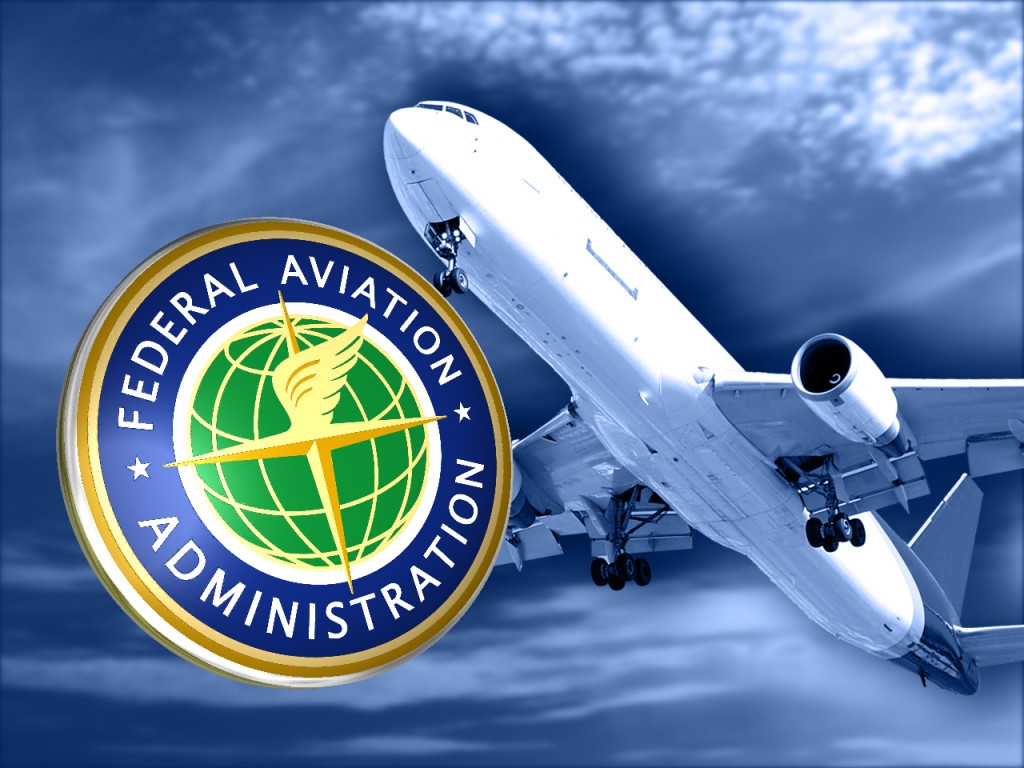Intro: Purpose and Disclaimer for Selling charter by the seat
With the proven and recognized benefits of chartering aircraft, brokers and operators have for years been searching for business models that will permit them to market charters on business aircraft to the public on a per-seat basis rather than chartering the whole aircraft (on a plane load single-entity basis) Selling charter by the seat. This effort has been spurred by the internet and technological advances such as smartphone apps that enhance marketers’ abilities to match passengers with available aircraft. Entrepreneurs who witness success in other industries are eager to apply crowdsourcing, sharing economy and other technological solutions to the on-demand charter industry.
A primary consideration with such business models is concern over whether their implementation results in regulatory agencies considering flights to be impermissible “scheduled” operations, or, in the case of the Department of Transportation (DOT), to also consider that the seller is acting as an unauthorized indirect air carrier. Many such models have been attempted, with some having been informally approved by DOT; others disapproved informally, or via regulatory agency enforcement action; and yet others not having undergone regulatory scrutiny.
This resource is intended to provide an overview of (a) the types of per-seat and planeload charter, selling charter by the seat operations using aircraft operated under Part 135 – scheduled, charter and on-demand operations, and (b) certain regulatory considerations that govern such operations. This analysis is not intended as a checklist of the legal and regulatory issues that may relate to specific types of programs; rather, it is intended to provide members with an introduction to the rules surrounding single seat charter sales. It is not intended to provide more than an illustrative introduction to the subject matter, and since the information is general in nature, it is no substitute for the advice of legal professionals addressing a specific set of facts that readers may face.
Who Can Sell Air Transportation?
Air transportation, whether scheduled or charter, may be sold by a licensed direct air carrier (operator), a licensed indirect air carrier (under DOT’s Part 380) or the authorized agent of either.
A Part 135 operator that is registered under Part 298 of the DOT’s regulations and holds a Part 119 air carrier certificate with Part 135 on-demand operations specifications (“on-demand operator,” also known as air taxi operator), may sell flights by the seat, in accordance with restrictions listed below, as scheduled operations, on-demand charters or public charters in conjunction with a public charter operator (PCO). In the case of scheduled and on-demand operations, extensive restrictions and limitations apply.
An indirect air carrier is a person or entity, including a broker, which holds out air transportation to the public in its own right, contracting separately with a licensed operator to operate the flights sold to the public. An indirect air carrier can sell charter NBAA MEMBERSHIP GUIDE TO SELLING CHARTER BY THE SEAT 3 flights on a per-seat basis only by acting as a PCO under Part 380 of DOT’s regulations. Flights operated under Part 380 are not considered scheduled flights by the FAA, regardless of frequency or regularity of such operations. DOT has proposed a rule to permit air charter brokers to sell planeload charters to the public in their own right as indirect air carriers, provided they comply with certain consumer protection provisions that focus primarily on notice to customers and the customer’s right to a refund if DOT requirements are not met. That proposal remains pending as of the date of publication of this guidance. (For further information, read NBAA’s resource on the Air Charter Broker NPRM at https://www.nbaa.org/ops/ part135/brokers/20131127-nbaa-comments-on-dot-air-charter-broker-nprm.php)
Operations Permitted by Part 135 “On-Demand” Operators
Under FAA and DOT regulations, on-demand operators can conduct three types of operations: scheduled, on-demand charters and public charters. Each operational type is discussed in detail below.
Scheduled Operations
Under the definition of “on-demand” in the FAA regulations, 14 CFR 110.2 (Definitions), a Part 135 on-demand operator can operate up to four round-trips a week1 in the same city-pair market utilizing nine-seat or fewer non-turbojet aircraft, or any size rotorcraft aircraft when the departure location, departure time and arrival location are held out to the public (i.e., “scheduled” operations). If an operator with such aircraft wants to operate five or more scheduled round-trip operations per week pursuant to a published schedule, they must first obtain commuter operations specifications. FAA does not permit any scheduled operations by turbojet aircraft, regardless of their particular seating capacity, without first obtaining Part 121 operations specifications. However, regardless of aircraft type or number of seats, the FAA does not consider any operation authorized by DOT to be conducted as a public charter under that agency’s regulations, 14 CFR Part 380, to be “scheduled.”2
Under Part 298 of DOT’s economic regulations, an operator that wants to operate five or more scheduled round trip flights per week between the same two points, including where those flights are operated as public charter flights under Part 380, must be found fit as a “commuter” carrier by DOT. If the operator wants to operate fewer than five scheduled round-trip flights per week between the same two points,3 they can do so as long as it is Part 135 on-demand operator and a DOT-registered air taxi operator.
On-Demand Operation
As a general matter, the FAA and DOT consider common carriage on-demand charter flights to be those in which the departure time, departure location and arrival location are specifically negotiated with the customer or the customer’s representative. Historically, the agencies have not required all three items to be negotiated with the customer and, indeed, have still considered a flight to be on-demand if only one of the items is negotiated. Thus, operators have been permitted to hold out specific departure and arrival locations, so long as the departure time remains to be negotiated. This is often seen where so-called “empty legs” are held out between two points, with the departure time stated as a range, and the specific time subject to negotiation between the operator and customer.
Operators are cautioned, however, that neither FAA nor DOT have specific rules stating how narrow a time window can be advertised and the flight still be considered on-demand. As a general rule, the narrower the window, the more likely the flight will draw scrutiny from those authorities. Provided that the general requirement noted above is met, under FAA rules, on-demand operations may be conducted with any type of aircraft of up to 30 seats and a payload capacity of up to 7,500 pounds.4
Under 14 CFR 110.2, on-demand operation means any operation for compensation or hire that is one of the following:
(i) Passenger-carrying operations conducted as a public charter under part 380 of this chapter or any operations in which the departure time, departure location and arrival location are specifically negotiated with the customer or the customer’s representative that are any of the following types of operations:
(ii) Common carriage operations conducted with airplanes, including turbojet-powered airplanes, having a passenger-seat configuration of 30 seats or fewer, excluding each crewmember seat, and a payload capacity of 7,500 pounds or less, except that operations using a specific airplane that is also used in domestic or flag operations and that is so listed in the operations specifications as required by § 119.49(a)(4) of this chapter for those operations are considered supplemental operations;
(iii) Non-common or private carriage operations conducted with airplanes having a passenger-seat configuration of less than 20 seats, excluding each crewmember seat, and a payload capacity of less than 6,000 pounds; or
(iv) Any rotorcraft operation.
Public Charter Operations
The definition of on-demand operation in Section 110.2 of the Federal Aviation Regulations specifically allows for PCO utilizing Part 135-sized aircraft to be conducted as on-demand flights. To take advantage of the public charter rules, a Part 135 on-demand air carrier would enter an arrangement with a PCO. Once the proper documents have been filed with the DOT, and such filings had been accepted by the DOT, the PCO can begin selling charter by the seat on the flights for which authority was granted. For more information on public charter rules and regulations and the required filings, please contact your regulatory attorney or consultant.
Additionally, operators should note that while FAA places no restriction on the number of public charters which can be conducted by a Part 135 operator, the DOT does not permit a Part 135 operator to conduct more than four and a half round-trip flights per week in any one city-pair market. To conduct more flights in any city pair, a Part 135 on-demand operator must obtain a Commuter Air Carrier Authorization from the DOT, which is typically a 9-12 month process at minimum.
Selling Part 135 Scheduled, On-Demand and Public Charter Flights on a Per-Seat Basis
As outlined above, there are three types of operations which can be held out to the public on a per-seat basis by Part 135 ondemand operators: (a) certain limited scheduled operations, (b) on-demand charter operations and (c) public charter operations. In recent years there has been a dramatic increase in air charter brokers selling Part 135 on-demand capacity using business models such as crowdsourcing, membership programs and mobile app solicitations. While it is beyond the scope of this analysis to assess the legality of any particular business model, listed below are questions and issues of which operators should be aware in assessing the feasibility of a particular model. For ease of review, we have broken this into scheduled, on-demand, and public charter flights.
Scheduled
- Is the carrier utilizing non-turbojet aircraft with fewer than 10 seats and maximum certificated takeoff weight of less than 7,500 pounds, or helicopters?
- If the carrier has not been found “fit” as a commuter air carrier by the DOT, is such carrier performing less than five round trips per week in each city pair market?
- If the broker is planning on taking any risk of loss on unsold seats, looking to selling charter by the seat e.g., through a membership program or otherwise, this will need to be explored further with regulatory counsel.
On-Demand
- Is the broker acting as an agent of the customer in procuring on-demand charter transportation? If not, is the broker acting as agent of the Part 135 operator in selling charter by the seat such charters?
- Is the broker or carrier leaving open for negotiation one or more of the following: departure location, departure time or arrival location? If the broker or carrier is publishing all three items, this would be considered a scheduled flight and could not be held out to the public as an on-demand charter flight for selling charter by the seat.
- Is the broker reselling air transportation (i.e., buying from the carrier for its own account and reselling such transportation to the customer)? If so, it is likely an unauthorized indirect air carrier operation.
- Is the broker “crowdsourcing” the flight by allowing passengers to self-aggregate and collectively determine the itinerary of the chosen flight? If so, have proper measures been taken to ensure that such crowdsourcing meets regulatory require- NBAA MEMBERSHIP GUIDE TO SELLING CHARTER BY THE SEAT 5 ments.5 Because there are numerous regulatory pitfalls if done incorrectly (see below), any crowdsourcing should be done in consultation with aviation counsel.
Public Charter
Has the PCO entered into a charter contract with a Part 135 carrier prior to filing for authority from the DOT and selling flights to the public?
- Has the PCO complied with the requirements of DOT Part 380 by preparing and filing the necessary forms with the DOT, having the necessary bond/financial instrument in place, properly escrowing passenger payments, entering into the necessary Tour Participant Agreements and adhering to all additional requirements of Part 380?6
- If the Part 135 carrier operating the public charters proposes to conduct more than four and a half round-trip flights per week in the same city-pair market, has it been found “fit” by DOT to operate as a commuter air carrier?
What are the Regulatory Pitfalls?
 What can and cannot be considered lawful by FAA and DOT in this area is extremely fact-specific. Unfortunately, the risks of engaging in activity that the FAA and DOT consider Selling charter by the seat unlawful can be harsh. Moreover, the standard within a given business model is not always patently clear and can be subject to prosecutorial discretion. Business models can be viewed by DOT and FAA as self-aggregation, crowdsourcing or facilitating the gathering of a group of people who then decide to charter aircraft on their own. FAA and DOT’s goal is to ensure that transparency exists between what the public purchases and what it receives both in terms of safety and consumer protection, including that appropriate licensure requirements are met.
What can and cannot be considered lawful by FAA and DOT in this area is extremely fact-specific. Unfortunately, the risks of engaging in activity that the FAA and DOT consider Selling charter by the seat unlawful can be harsh. Moreover, the standard within a given business model is not always patently clear and can be subject to prosecutorial discretion. Business models can be viewed by DOT and FAA as self-aggregation, crowdsourcing or facilitating the gathering of a group of people who then decide to charter aircraft on their own. FAA and DOT’s goal is to ensure that transparency exists between what the public purchases and what it receives both in terms of safety and consumer protection, including that appropriate licensure requirements are met.
It is not surprising that so many selling charter by the seat seek to selling charter by the seat in air transportation on a flight with a planned departure time but without the need to obtain additional scheduled authority from either DOT or FAA. The time, effort and costs associated with obtaining and maintaining these authorities are not insubstantial. Failing to obtain appropriate authority, however, can result in FAA and DOT individually pursuing enforcement action. Among these include cease and desist orders, together with potential civil penalties by DOT and FAA that can easily reach seven figures, as well as other measures against a company itself or individuals involved in the violations.
In this regard, FAA’s statutory authority permits it to assess $11,000 per regulatory violation per flight leg and DOT’s statutory authority subjects a violator to $32,140 per violation – which could be per-passenger of selling charter by the seat– and $32,140 per day that each violation continues. In short, dozens of regulatory violations can be multiplied by the number of legs – sometimes dozens in a day – or the number of passengers involved. One can then understand how the penalty dollars increase exponentially. Moreover, FAA and DOT can each issue their own civil penalties separately and simultaneously, making things even more difficult for the unwary operator.7
In addition, DOT has the power to suspend or revoke the authority of an operator and to take action against individuals deemed responsible for the unlawful activities, including banning them from the industry.8 FAA also has the power to take certificate action against the air carrier involved (usually an on-demand air carrier) to either suspend or revoke, and almost
As outlined above, the pitfalls of failing to explore the specific facts of a given operation against the sometimes difficult-tounderstand regulatory standards can have disastrous impacts upon companies and individual alike. It is, therefore, recommended to always seek appropriate advice before undertaking operations you have questions about. The risk of not doing so can be surprisingly and debilitatingly harsh.
Conclusion
Based upon the above, for selling charter by the seat it is clear that Part 135 on-demand and by-the-seat sales are not mutually exclusive categories. When selling or brokering per-seat transportation, sales brokers and carriers must navigate their way through DOT and FAA regulations that are not always clear or consistent. Until such time as the DOT and FAA provide more detailed guidance in this area, heightened caution is essential. If in doubt, the best course of action is to seek advice from aviation counsel and, if questions persist, seek a determination from FAA and/or DOT regulators before commencing operations.
1 Because commuter authority is required only if five or more round-trips are operated in a single market, a Part 135 on-demand operator can “schedule” four-round trips and a single one-way trip per week in each market. This is commonly called “four and a half” round trips per week.
2 See section on Public Charters on page 4
3 DOT’s Part 298 permits such operations with aircraft that as originally designed have up to 60 seats or a maximum payload capacity of up to 18,000 pounds. 14 CFR 298.2.
4 See definition of “on-demand operation” in 14 CFR 110.2. NBAA MEMBERSHIP GUIDE TO SELLING CHARTER BY THE SEAT 4
5 Although DOT has provided no public guidance, the keys to this model appear to include the following: (a) the membership entity acts as web host providing a members-only web site through which a “lead passenger” notifies other members about a desired charter flight; (b) an agreement arises among members to share a charter flight prior to the operator being contacted about the flight; (c) once the members commit to the flight, the membership entity acts as the agent of the members in arranging the charter trip. Neither the membership entity nor the operator can play any other role in forming the charter group.
6 Note that a Part 135 on-demand operator may itself file a prospectus under DOT’s Part 380 and become a PCO. In such an event, the operator would be subject to the same restrictions noted in paragraphs (b) and (c) of this section.
7 For example, some years ago, FAA and DOT both took action against all those involved in an unlawful operation, including the certificate holder, aircraft operator and crew, and broker. In addition to an order to cease and desist from further unlawful conduct, civil penalties assessed by DOT against the certificate holder, principals of the aircraft operator and broker amounted to $275,000. FAA enforcement action included emergency revocation of the flight crew’s airman certificates and emergency revocation of the air carrier’s Part 135 certificate. Federal fraud indictments were also issued resulting in criminal convictions and sentences of years in jail In another matter, a late 2016 FAA Notice of Proposed civil penalty was issued in the amount of $218,700 for a small number of flights where the FAR Part 135 on demand air carrier was alleged to have operated scheduled commuter flights beyond its on-demand authority.
8 For example, in addition to issuing cease and desist orders and assessing civil penalties, DOT has on various occasions banned individuals who engaged in unlawful conduct from the industry for periods of one to five years, and for life in the most egregious case. NBAA MEMBERSHIP GUIDE TO SELLING CHARTER BY THE SEAT 6 universally to revoke the certificate. Pilots typically receive actions to suspend or revoke their airman certificates regardless of what they are told or whether they genuinely believe the operations to be lawful. Suspending a pilot’s airman certificate often ends or substantially diminishes the pilot’s career. Lastly, operating flights contrary to the relevant regulations can invalidate insurance coverage and create an event of default under loan documents.
ACKNOWLEDGMENTS
AirCharter.com LLC and the NBAA thanks the volunteers of NBAA’s Regulatory Issues Advisory Group who developed and reviewed this association publication. The principal authors are Dayton Lehman Jr. of Capitol Business Solutions, Inc., Aviation Group,and Paul Lange of the Law Offices of Paul A. Lange, LLC, with significant contributions also made by Victor Smith of Garofalo, Goerlich & Hainbach, PC and Eileen M. Gleimer of Crowell & Moring LLP. For additional guidance on business aircraft operating and ownership options, visit the NBAA .

 Hawker-Beechcraft Hawker 400XP
Hawker-Beechcraft Hawker 400XP Cessna Citation V
Cessna Citation V Beechcraft Premier IA
Beechcraft Premier IA Beechcraft King Air 350
Beechcraft King Air 350





